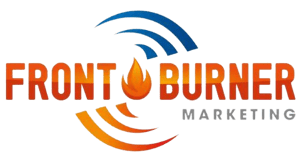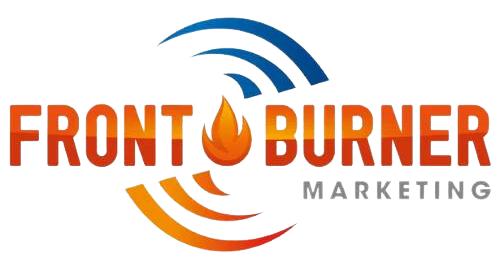 Digital marketing is essential for any business looking to grow online—but keeping up with the latest digital marketing strategies can feel overwhelming. Whether you're a seasoned pro, a marketing newbie, or someone wearing the marketing hat alongside many others, staying current matters.
Digital marketing is essential for any business looking to grow online—but keeping up with the latest digital marketing strategies can feel overwhelming. Whether you're a seasoned pro, a marketing newbie, or someone wearing the marketing hat alongside many others, staying current matters.
So, let’s start with the basics: What is digital marketing? Simply put, it’s the use of online channels and tools to connect with your audience, promote your products or services, and drive meaningful results. There are many types of digital marketing—each with its own strengths and use cases.
Why is it important? As you probably know, digital marketing helps you reach a larger audience than you could through most traditional methods. Plus you can direct your efforts towards those who are most likely to buy your product or service by using targeting criteria that exemplify your buyer personas. Additionally, it's often more cost-effective than traditional advertising and enables you to measure success on a frequent basis, so you can be more responsive and proactive—fine tuning your tactics, messaging, and delivery methods as needed.
In this guide, we’ll break down 12 key digital marketing strategies so you can start using them effectively and confidently.
1. Search Engine Optimization (SEO)
This is the process of optimizing your website to "rank" higher in search engine results pages, which increases the amount of organic (AKA free) traffic going to your website. Websites, blogs, and infographics can all benefit from SEO tactics and help attract visitors.
There are several ways to approach SEO in order to drive qualified leads to your website including:
On-page SEO:
This type of SEO focuses on all of the website content that is "on a page". By researching keywords for their search volume and intent or meaning, you can answer questions for readers and show up higher, or rank, on the organic search results pages those questions produce.
Off-page SEO:
This type of SEO encompasses all of the activity that takes place "off a page". Other things affect your website rank besides your page content, like Inbound links (AKA backlinks). The number of websites that publish links to yours, and the relative "authority" of those publishers, affect how highly you rank for keywords you care about. How exactly can you do this? By networking with other publishers, writing guest posts on their websites, linking back to your website, and generating external attention. This can help you earn the backlinks you need to move your website up on all the right search engine results pages (SERPs).
Technical SEO:
This type of SEO addresses the backend of your website and how your pages are coded. Image compression, structured data, and CSS file optimization are all forms of technical SEO that can increase your website's loading speed. The speed is an important ranking factor in the eyes of search engines like Google.
2. Content Marketing
Content marketing focuses on creating, publishing, and distributing content for your target audience.
Here are some channels that can play a part in your content marketing strategy:
- Blog posts: Writing and publishing articles on your company blog helps you demonstrate your industry expertise and generates organic search traffic. This ultimately gives you more opportunities to convert website visitors into leads for your sales team.
- Ebooks and whitepapers: Ebooks, whitepapers, and similar long-form content helps further educate your website visitors. Plus, it allows you to exchange content for a reader's contact info, which can help you generate leads for your company and move people through the buyer's journey.
- Infographics: This type of content helps website visitors visualize a concept you want to help them learn.
- Audio or visual content: Believe it or not, television and radio are still channels used for digital marketing. Creating content that can be shared online as a video or heard on the radio by listeners can greatly broaden your potential audience.
3. Social Media Marketing
Social media marketing helps you build brand awareness, engage with your audience, and drive traffic to your website through platforms like Instagram, Facebook, LinkedIn, X, and Pinterest. It’s a great way to connect with people where they’re already spending time online.
Beyond regular posting, businesses often create shareable content or collaborate with influencers to boost visibility. Whether you're starting conversations or running paid campaigns, a strong social media presence can turn followers into leads—and leads into loyal customers.
4. Pay Per Click (PPC)
Pay Per Click advertising is a way to drive targeted traffic to your website by paying each time someone clicks on your ad. The most common platform is Google Ads, which lets you bid for top positions on search engine results pages based on keywords your audience is searching for.
PPC also extends beyond Google. You can run paid ads on a variety of social platforms to reach users where they’re already active:
-
Facebook & Instagram Ads: Customize image, video, or carousel ads and target users based on demographics, behaviors, and interests.
-
TikTok Ads: Create short-form video campaigns that blend into users’ feeds and reach a highly engaged, younger audience.
-
LinkedIn Sponsored Content: Promote posts or send direct messages to professionals based on industry, job title, or location.
-
X Ads: Boost tweets or promote your profile to reach users aligned with your business goals—like app installs or website visits.
With the right targeting and creative, PPC can be a powerful tool to increase visibility and generate leads quickly.
5. Affiliate Marketing
Affiliate marketing is a performance-based strategy where you earn a commission by promoting another company’s products or services through your content.
Common affiliate marketing channels include:
-
Hosting video ads through programs like the YouTube Partner Program
-
Sharing affiliate links on blogs, websites, or social media platforms
Affiliate marketing often overlaps with influencer marketing, especially when content creators promote products to their followers. When paired with the right creators and platforms, it can be a cost-effective way to grow your brand and boost conversions.
6. Marketing Automation
Marketing automation uses software to streamline and automate repetitive marketing tasks, helping you save time and improve efficiency. It's a key tool for scaling digital marketing efforts without sacrificing personalization.
Common uses of marketing automation include:
-
Email automation: Automatically send newsletters, nurture sequences, and updates to segmented contact lists—ensuring the right message reaches the right people at the right time.
-
Social media scheduling: Plan and schedule posts across platforms in advance, keeping your content consistent without the need for daily manual effort.
-
Automated workflows: Set up behavior-based triggers to launch targeted actions—like follow-up emails, lead scoring, or customer onboarding—based on user activity.
With the right marketing automation tools in place, you can improve engagement, boost conversion rates, and stay focused on strategy while the software handles the details.
7. Email Marketing
Email marketing is a powerful way to engage your audience, promote content, and drive conversions. With the right strategy, you can reach subscribers directly in their inbox with timely, relevant messages.
Common types of marketing emails include:
-
Blog newsletters
-
Follow-ups after downloads or sign-ups
-
Welcome emails for new customers
-
Promotions or seasonal offers
-
Educational tips to nurture leads
8. Online PR
This is the practice of securing earned online coverage with digital publications, blogs, and other content-based websites. It's similar to traditional PR, but in the online space. Some ways to practice online PR include:
- Reporter outreach via social media: Talk to journalists on Twitter or other platforms to develop relationships with the press that produce earned media opportunities for your company.
- Engaging in online reviews of your company: Have you considered engaging with those who review your company--both good and bad? Probably not, right? We suggest giving it a try. Engaging company reviews can help you humanize your brand and deliver powerful messaging to protect your reputation.
- Engaging in comments on your personal website or blog: Just like responding to reviews of your company, responding to the people who are reading your content is a great way to generate productive conversation around your industry.
9. Inbound Marketing
Inbound marketing is the marriage of context and content, providing prospects with the right content in the right place at the right time. It refers to a marketing methodology where you attract, engage, and delight customers at every stage of their journey to purchase. This helps you create a customer experience that works with your prospect, not against them. Here are some examples of inbound marketing:
- Blogging (instead of pop-up ads)
- Video marketing (instead of commercial advertising)
- Email contact lists (instead of cold emails to random or purchased lists)
10. Sponsored Content
Sponsored content means that your organization pays another entity to create and promote content that discusses your brand or service in some way. A popular and growing type of sponsored content is influencer marketing. Brands sponsor an influencer in their industry to publish posts or videos related to the company on social media.
A blog post or article that is written to highlight a topic, service, or brand, could also serve as a form of sponsored content.
11. Search Engine Marketing (SEM)
Search engine marketing is a great way to increase website traffic by placing paid ads on search engines. The two most popular SEM services are Bing Ads and Google Ads. These paid ads fit perfectly on the top of search engine results pages, providing instant visibility.
12. Instant Messaging Marketing
Marketing your products through messaging platforms is a quick way to reach potential leads. You can easily let your audience know about flash sales, new products, or even updates about their orders. It’s also a convenient way to connect to customer service. You can instant message directly to a mobile phone via text or through messages on platforms like Facebook Messenger or WhatsApp.
Beginner’s Guide: Digital Marketing FAQ
Have questions about digital marketing? You're not alone. We've compiled answers to the most frequently asked questions—from what digital marketing is to how to choose the right strategies for your business.
Digital marketing is the use of online channels—like search engines, social media, email, and websites—to promote products or services and connect with potential customers.
Start by identifying your goals and target audience, then choose digital marketing channels that align with your strategy—like SEO, email marketing, or social media.
Social media marketing promotes your brand and content on platforms like Facebook, Instagram, LinkedIn, and TikTok to build awareness and drive engagement.
Now You Can Power Up Your Digital Marketing Skills!
We hope you learned something and are inspired to incorporate a new type of digital marketing into your current strategy. Not exactly sure how to do it? No problem—check out Front Burner's digital marketing course offerings available through our Marketing Training Room.



.png?width=290&name=Untitled%20design%20(3).png)